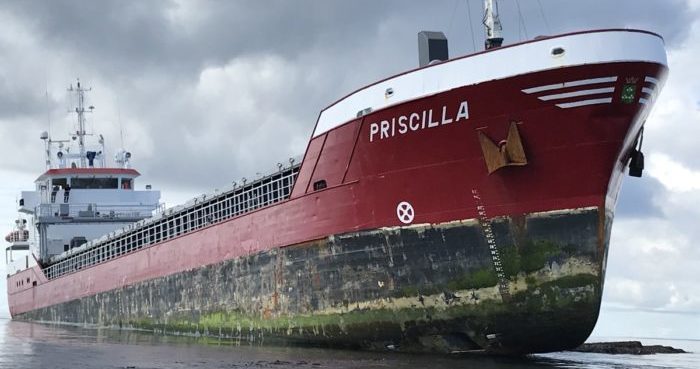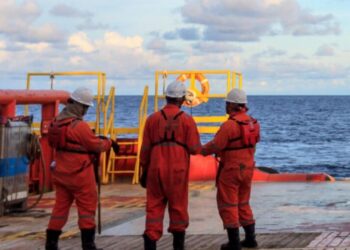The vessel MV Priscilla, which ran aground off Caithness last week, remains in a stable condition but hard aground. Now, a Salvage Control Unit (SCU) meeting was held yesterday (July 24), where the salvors’ – Multraship/Ardent/Wagenborg – plan was discussed and approved.
Under this plan, the Temporary Exclusion Zone (TEZ) has been extended to 1,000 metres as there will be increased activity around the vessel once operations start.
[smlsubform prepend=”GET THE SAFETY4SEA IN YOUR INBOX!” showname=false emailtxt=”” emailholder=”Enter your email address” showsubmit=true submittxt=”Submit” jsthanks=false thankyou=”Thank you for subscribing to our mailing list”]
Namely, the re-float operation will include the following stages:
- Sea state and tidal forces, approximately 1,350 tonnes of cargo will need to be discharged onto barges, transported and loaded onto a receiving cargo vessel;
- The casualty’s tanks will then be prepared for air pressurisation;
- The casualty will then be de-ballasted and re-floated on high water. After a successful re-float there will be a brief inspection of the vessel before towing it to a safe location to facilitate further inspections.
The vessel is carrying 52 tonnes of Marine Gas Oil (MGO), 4 tonnes of Heavy Fuel Oil (HFO), 2 tonnes of Lubricating Oil (LO) and has a cargo of 3,300 tonnes of bulk fertiliser in one cargo hold.
No pollution has been reported and the six crew members remain safe and well on board. However, in order to limit the possibility of pollution, it has been agreed to remove up to 35 tonnes of the MGO. The remaining MGO will be required for ship services.
As for the Heavy Fuel Oil, it is reported to be solidified and contained in a tank with no heating. No attempt will be made to remove it. The Lubricating Oil will remain on board for ship services.
On 18 July, HM Coastguard received a report that a vessel ran aground on the Pentland Skerries approximately 5nm north east of Duncansby Head. The 89m cargo ship ‘Priscilla’, carrying six people onboard, did not report significant damage, while there is no sign of any pollution.
At first, two tugs and the Thurso RNLI Lifeboat were on scene, with a local tug and a more powerful tug attempting to refloat the vessel. However, the first attempts were unsuccessful, as the tugs did not refloat the vessel.




























































